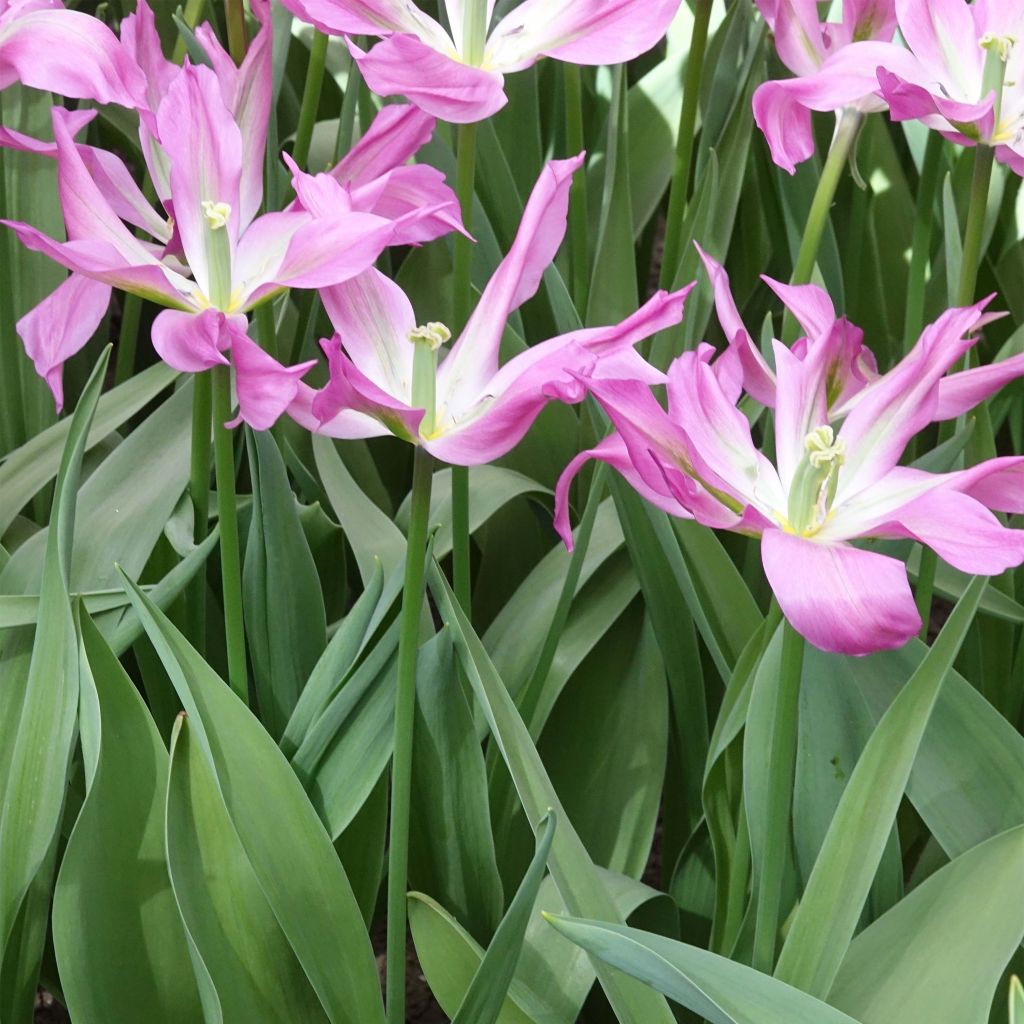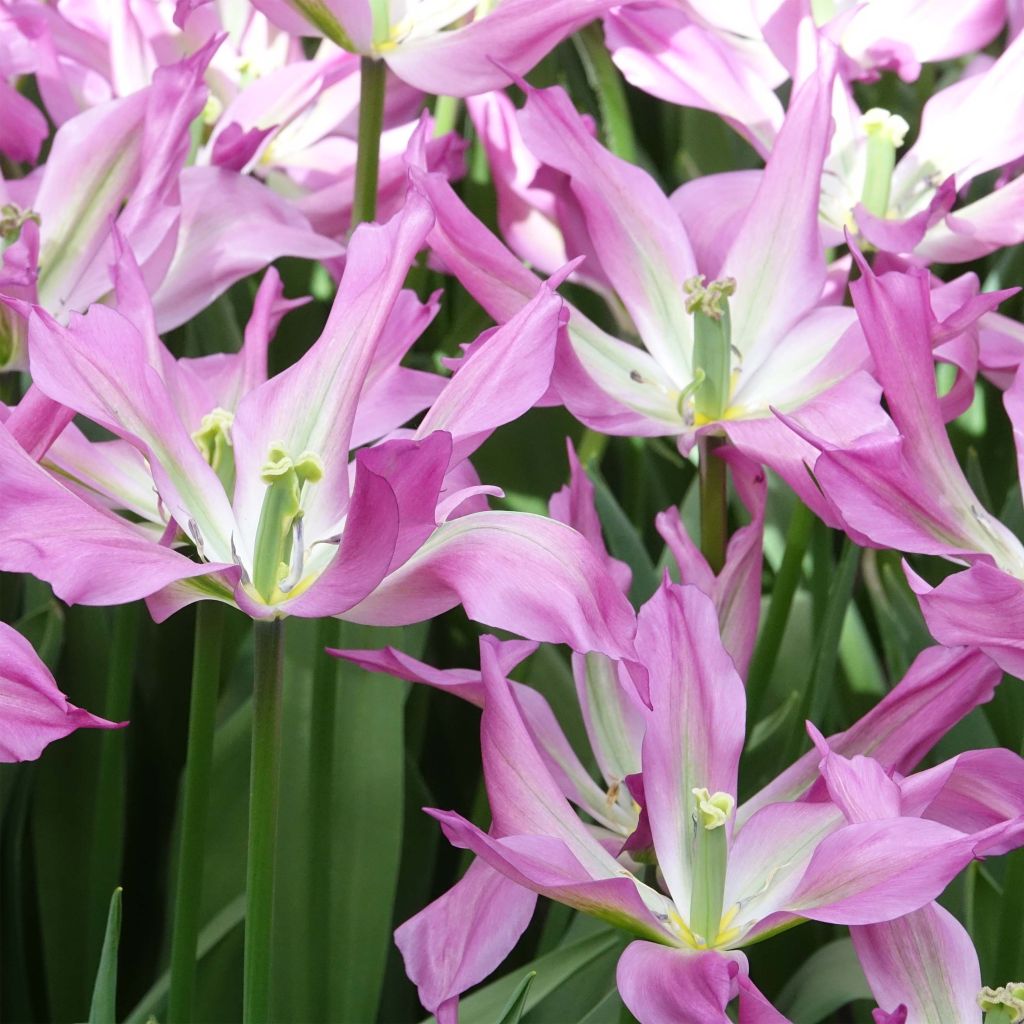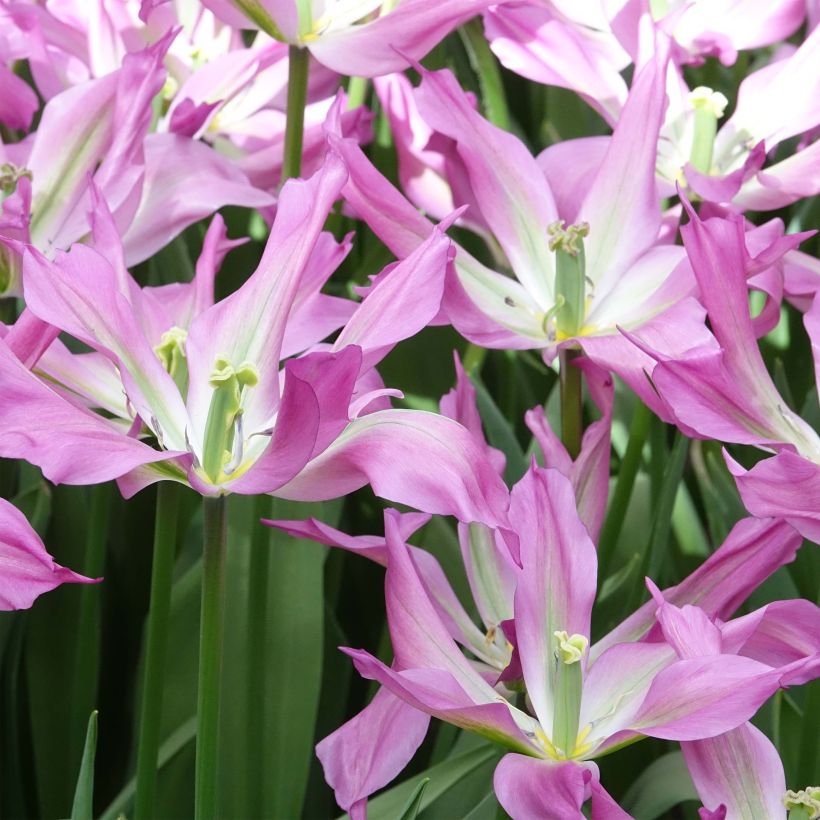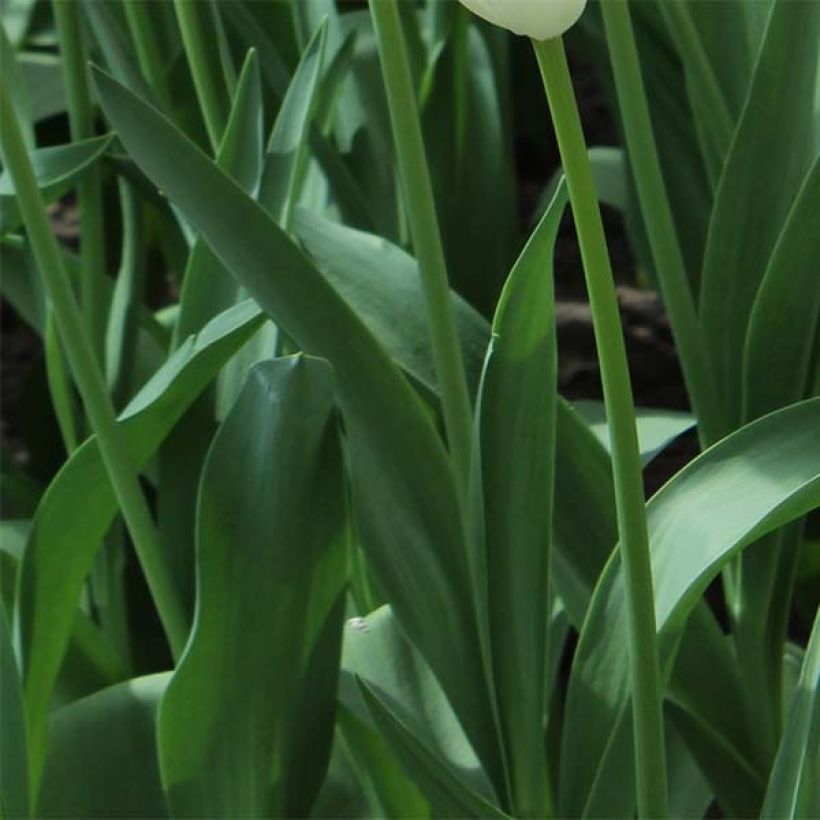

Tulipe fleur de lis Purple Dance


Tulipe fleur de lis Purple Dance
Tulipa Purple Dance - Lily flowering Tulip
Tulipa Purple Dance
Tulip
Order in the next for dispatch today!
Dispatch by letter from €3.90.
Delivery charge from €5.90 Oversize package delivery charge from €6.90.
Current delivery delay: 1 day.
More information
This item is not available in your country.
Schedule delivery date,
and select date in basket
This plant carries a 6 months recovery warranty
More information
We guarantee the quality of our plants for a full growing cycle, and will replace at our expense any plant that fails to recover under normal climatic and planting conditions.
From €5.90 for pickup delivery and €6.90 for home delivery
Express home delivery from €8.90.
Does this plant fit my garden?
Set up your Plantfit profile →
Description
The 'Purple Dance' Tulip is a new variety of lily-flowered tulip with curved magenta pink petals, streaked with green. It will be sensational in a vase or in flower beds, whether used alone or paired with other violet, light pink or white varieties. Its unique flowers are perched on a stem that is approximately 50cm (20in) tall, slender but very sturdy against the elements. It blooms quite late, in April-May depending on the climate.
The lily-flowered tulip 'Purple Dance' belongs to the lily family. It is a recent cultivar obtained in the Netherlands, alongside the varieties 'Love Dance' and 'Green Dance'. It is classified in division 6 of horticultural tulips, the main characteristics of this category are as follows: they bear single flowers and bloom in the second half of spring, the cups are narrow and the pointed tepals open in a star shape. Each flower of 'Purple Dance' opens into a rich magenta pink, streaked with green, similar to viridiflora tulips. This variety will reach a height of 30 to 40cm (12 to 16in) when in bloom. The flowering takes place in late April or early May. The foliage is thinner than that of other tulips. Each solitary flower is supported by a slender stem that is resistant to the elements.
Lily-flowered tulips, created at the beginning of the 20th century, were highly successful among our grandmothers and then fell somewhat into oblivion. They are now being rediscovered, redesigned, daring and well suited to our contemporary decor. The 'Purple Dance' lily-flowered tulip finds its place in well-ordered large flower beds. Since its flowering is late, it maximizes the duration of flowering in the flower beds. It pairs particularly well with pink, blue, purple and white tones. It can be traditionally planted in borders and flower beds, but also in pots and planters. It complements large perennials perfectly and is ideal for creating elegant bouquets. When using it in a vase, use very little water, just a bottom is enough. Additionally, if your tulips open too quickly, you can add two to three ice cubes to the vase each day. Many varieties of lily-flowered tulips are grown for forcing and produce cut flowers for a large part of the year.
Report an error about the product description
Tulipa Purple Dance - Lily flowering Tulip in pictures




Plant habit
Flowering
Foliage
Botanical data
Tulipa
Purple Dance
Liliaceae
Tulip
Cultivar or hybrid
Planting and care
Place the 'Purple Dance' tulips in a sunny or partially shaded location from September to December for spring flowering. Plant the bulbs in a light, fertile, and well-drained soil, and loosen it to a depth of 15cm (6in). Space the bulbs 15cm (6in) apart without touching each other to create a mass effect that will give a more decorative appearance. The care required is very easy. Simply water regularly, especially during dry winters, and cut the flower stalks after flowering. Allow the leaves to completely dry before cutting them and apply a balanced liquid fertilizer every week during the first month.
Planting period
Intended location
Care
This item has not been reviewed yet - be the first to leave a review about it.
Haven't found what you were looking for?
Hardiness is the lowest winter temperature a plant can endure without suffering serious damage or even dying. However, hardiness is affected by location (a sheltered area, such as a patio), protection (winter cover) and soil type (hardiness is improved by well-drained soil).

Photo Sharing Terms & Conditions
In order to encourage gardeners to interact and share their experiences, Promesse de fleurs offers various media enabling content to be uploaded onto its Site - in particular via the ‘Photo sharing’ module.
The User agrees to refrain from:
- Posting any content that is illegal, prejudicial, insulting, racist, inciteful to hatred, revisionist, contrary to public decency, that infringes on privacy or on the privacy rights of third parties, in particular the publicity rights of persons and goods, intellectual property rights, or the right to privacy.
- Submitting content on behalf of a third party;
- Impersonate the identity of a third party and/or publish any personal information about a third party;
In general, the User undertakes to refrain from any unethical behaviour.
All Content (in particular text, comments, files, images, photos, videos, creative works, etc.), which may be subject to property or intellectual property rights, image or other private rights, shall remain the property of the User, subject to the limited rights granted by the terms of the licence granted by Promesse de fleurs as stated below. Users are at liberty to publish or not to publish such Content on the Site, notably via the ‘Photo Sharing’ facility, and accept that this Content shall be made public and freely accessible, notably on the Internet.
Users further acknowledge, undertake to have ,and guarantee that they hold all necessary rights and permissions to publish such material on the Site, in particular with regard to the legislation in force pertaining to any privacy, property, intellectual property, image, or contractual rights, or rights of any other nature. By publishing such Content on the Site, Users acknowledge accepting full liability as publishers of the Content within the meaning of the law, and grant Promesse de fleurs, free of charge, an inclusive, worldwide licence for the said Content for the entire duration of its publication, including all reproduction, representation, up/downloading, displaying, performing, transmission, and storage rights.
Users also grant permission for their name to be linked to the Content and accept that this link may not always be made available.
By engaging in posting material, Users consent to their Content becoming automatically accessible on the Internet, in particular on other sites and/or blogs and/or web pages of the Promesse de fleurs site, including in particular social pages and the Promesse de fleurs catalogue.
Users may secure the removal of entrusted content free of charge by issuing a simple request via our contact form.
The flowering period indicated on our website applies to countries and regions located in USDA zone 8 (France, the United Kingdom, Ireland, the Netherlands, etc.)
It will vary according to where you live:
- In zones 9 to 10 (Italy, Spain, Greece, etc.), flowering will occur about 2 to 4 weeks earlier.
- In zones 6 to 7 (Germany, Poland, Slovenia, and lower mountainous regions), flowering will be delayed by 2 to 3 weeks.
- In zone 5 (Central Europe, Scandinavia), blooming will be delayed by 3 to 5 weeks.
In temperate climates, pruning of spring-flowering shrubs (forsythia, spireas, etc.) should be done just after flowering.
Pruning of summer-flowering shrubs (Indian Lilac, Perovskia, etc.) can be done in winter or spring.
In cold regions as well as with frost-sensitive plants, avoid pruning too early when severe frosts may still occur.
The planting period indicated on our website applies to countries and regions located in USDA zone 8 (France, United Kingdom, Ireland, Netherlands).
It will vary according to where you live:
- In Mediterranean zones (Marseille, Madrid, Milan, etc.), autumn and winter are the best planting periods.
- In continental zones (Strasbourg, Munich, Vienna, etc.), delay planting by 2 to 3 weeks in spring and bring it forward by 2 to 4 weeks in autumn.
- In mountainous regions (the Alps, Pyrenees, Carpathians, etc.), it is best to plant in late spring (May-June) or late summer (August-September).
The harvesting period indicated on our website applies to countries and regions in USDA zone 8 (France, England, Ireland, the Netherlands).
In colder areas (Scandinavia, Poland, Austria...) fruit and vegetable harvests are likely to be delayed by 3-4 weeks.
In warmer areas (Italy, Spain, Greece, etc.), harvesting will probably take place earlier, depending on weather conditions.
The sowing periods indicated on our website apply to countries and regions within USDA Zone 8 (France, UK, Ireland, Netherlands).
In colder areas (Scandinavia, Poland, Austria...), delay any outdoor sowing by 3-4 weeks, or sow under glass.
In warmer climes (Italy, Spain, Greece, etc.), bring outdoor sowing forward by a few weeks.




































